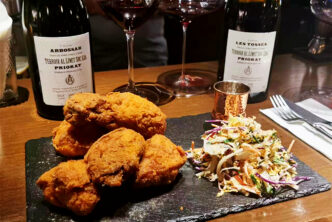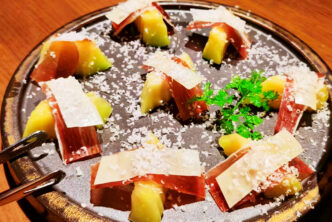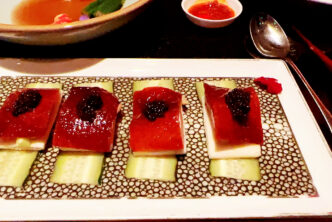22 Jianchang Hutong, Dongcheng District, Beijing
Mansion Feast by Jing Yan in Beijing opened last December to rave reviews and the accolades have been coming its way ever since. Currently the hottest restaurant on the capital’s dining stage, it is being prognosticated with an easy one star and perhaps even two when the new edition of the famous red guide hits computer screens (oops, I meant to say book store shelves and newsstands) later this year.
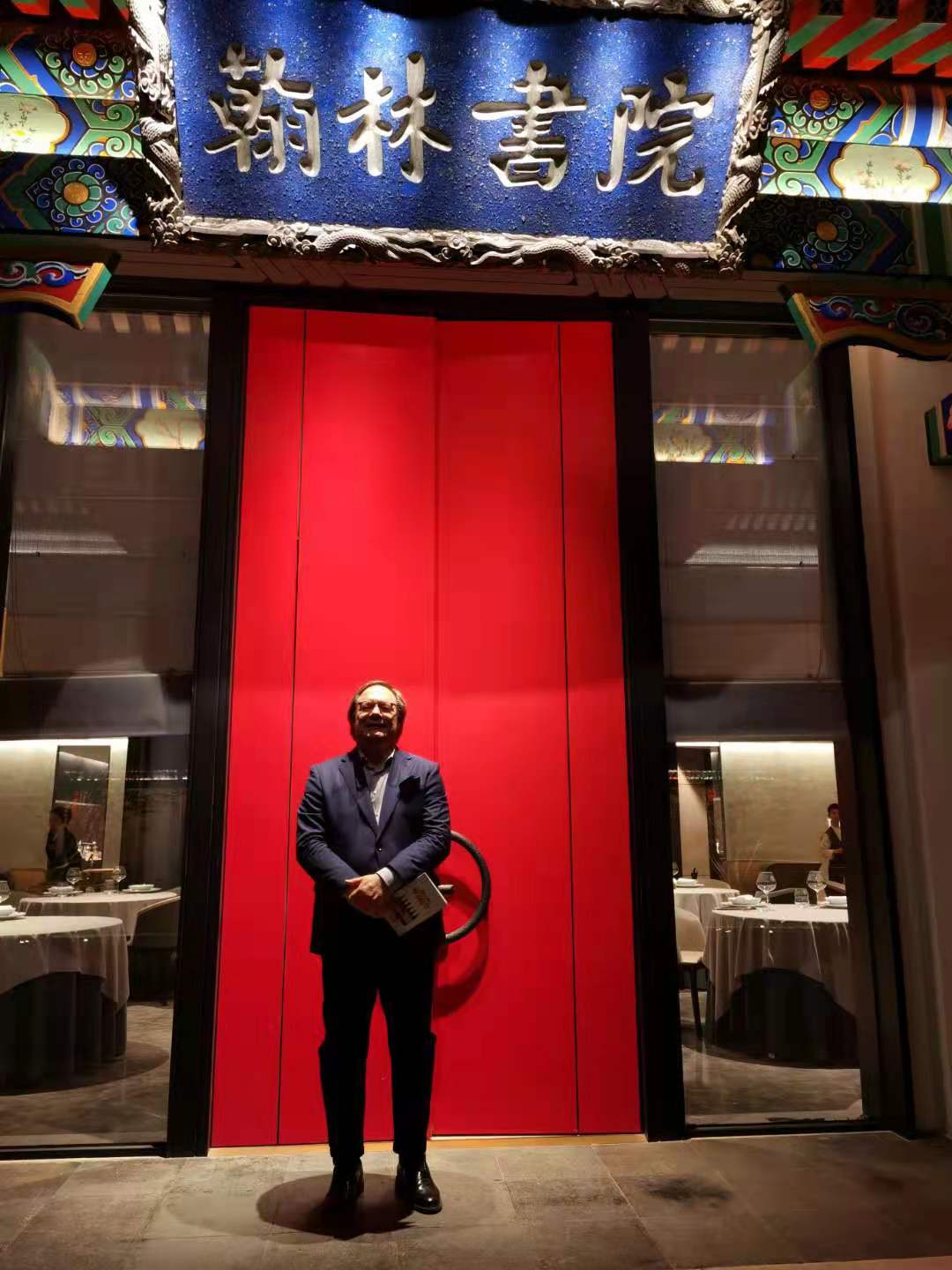
I guess the writing was in the fortune cookie because Head Chef Duan Yu has a long and distinguished history in the Beijing restaurant industry, and has never failed an outing. Perhaps because his is the name also of a famous martial arts character, he has moved swiftly and sharply from one successful restaurant to another, serving as the Executive Chef of Chinese cuisine at the Beijing New World Hotel, the Beijing Rosewood Hotel, and the Beijing Tylfull Hotel. In 2017 he founded the Beijing Poetry-Wine (in Shijiu) restaurant and promptly won a Michelin star in the first Beijing Michelin guide to the city’s restaurants. In 2019 he launched his second Beijing Poetry-Wine restaurant, this time in Solana, and won a Michelin star there as well. At his latest battlefield (non-martial arts but rather a cooking one), the beautiful Mansion Feast Beijing by Jing Yan, he is also co-owner and things are humming along nicely.
The restaurant’s fare offers a mix of the traditional and the modern applied to Chinese Aristocratic Cuisine, based on extreme ingredient selection and refined cooking techniques. Over the years Duan has become famous for numerous dishes, but three that stand out in particular are the black truffle beef bone marrow clay pot rice, Duan’s excellent Fish head, and the aged Hua Diao drunken crabs. In running the beautiful restaurant (the courtyard is admittedly gorgeous), he is more than capably helped by the very talented duo of Qiao Ling, Operations Director, and Henry Wu, Consultant Chief Sommelier at Mansion Feast and a wine man of noteworthy experience, having worked as the Chief Sommelier at Maison Boulud, Temple Restaurant and Four Seasons Beijing (obviously feeling like he didn’t have enough to do, he has also been General Manager at numerous important Chinese restaurants, including the Poetry-Wine Restaurant Jinxiu, and just so he doesn’t start feeling too relaxed, he has been named Brand General Manager of the new Chef Duan restaurant that will be opening next September).
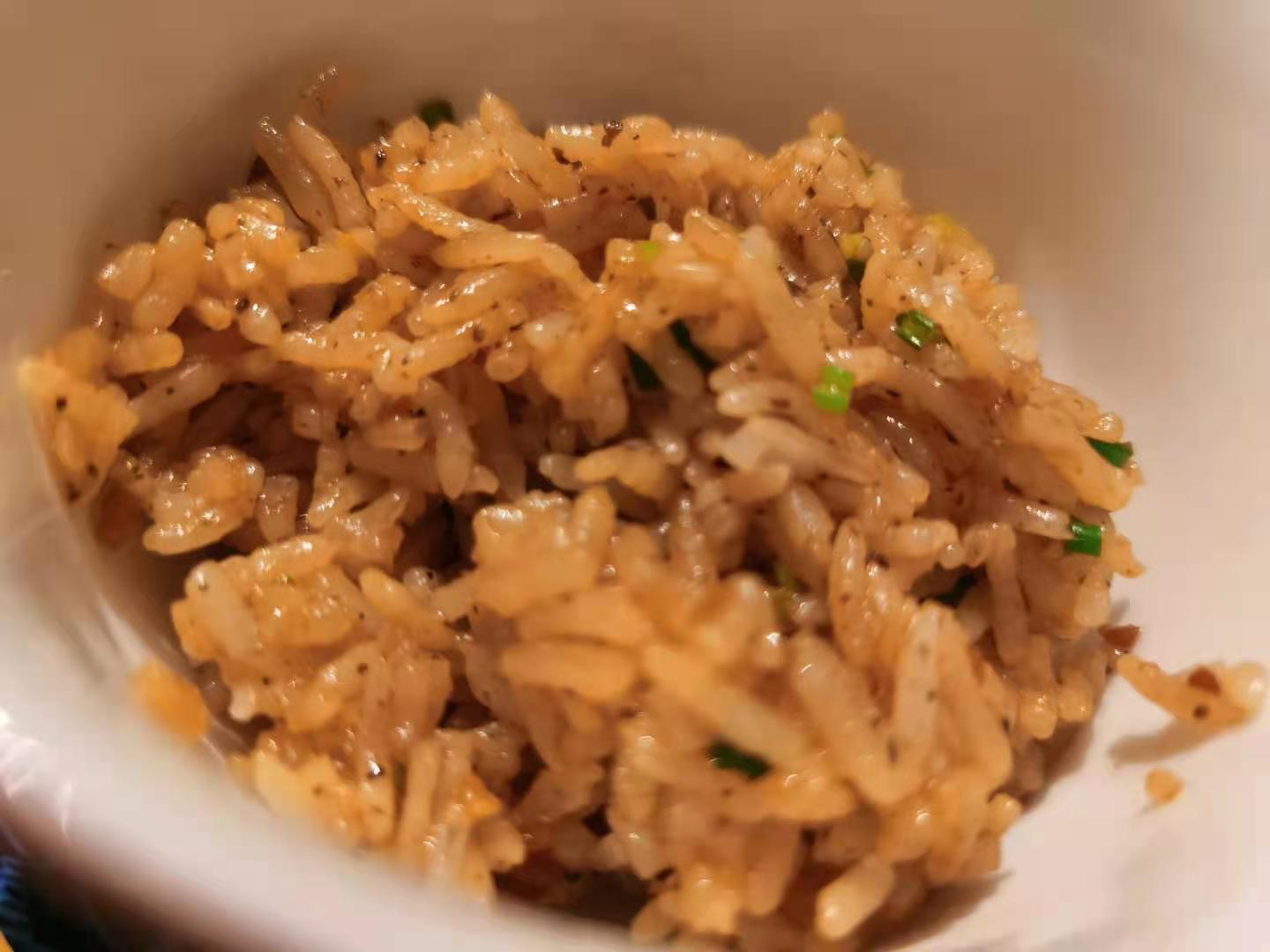
My dining experience was admittedly sensational. The service is impeccable, the waiting time between one dish and another just about right, the cooking techniques spot on and the quality of the ingredients first rate. I really couldn’t have asked for a better dinner than the one I had. My personal favourite dishes on the night were the braised mutton brisket with concentrated chestnut sauce, the Australian Wagyu beef with oyster extraction and the by now legendary Chef Duan’s beef bone marrow clay pot rice (unlike the fluffy Chinese-style rice you are most likely acquainted with, this delectable beauty is forged by bone marrow drippings, with the rice dutifully doing its part to absorb all that heavenly fatty goodness). I could easily have eaten another serving of each one and have been none the worse for wear; dishes so good you might forget you have a home to go back to sometime later in the morning.
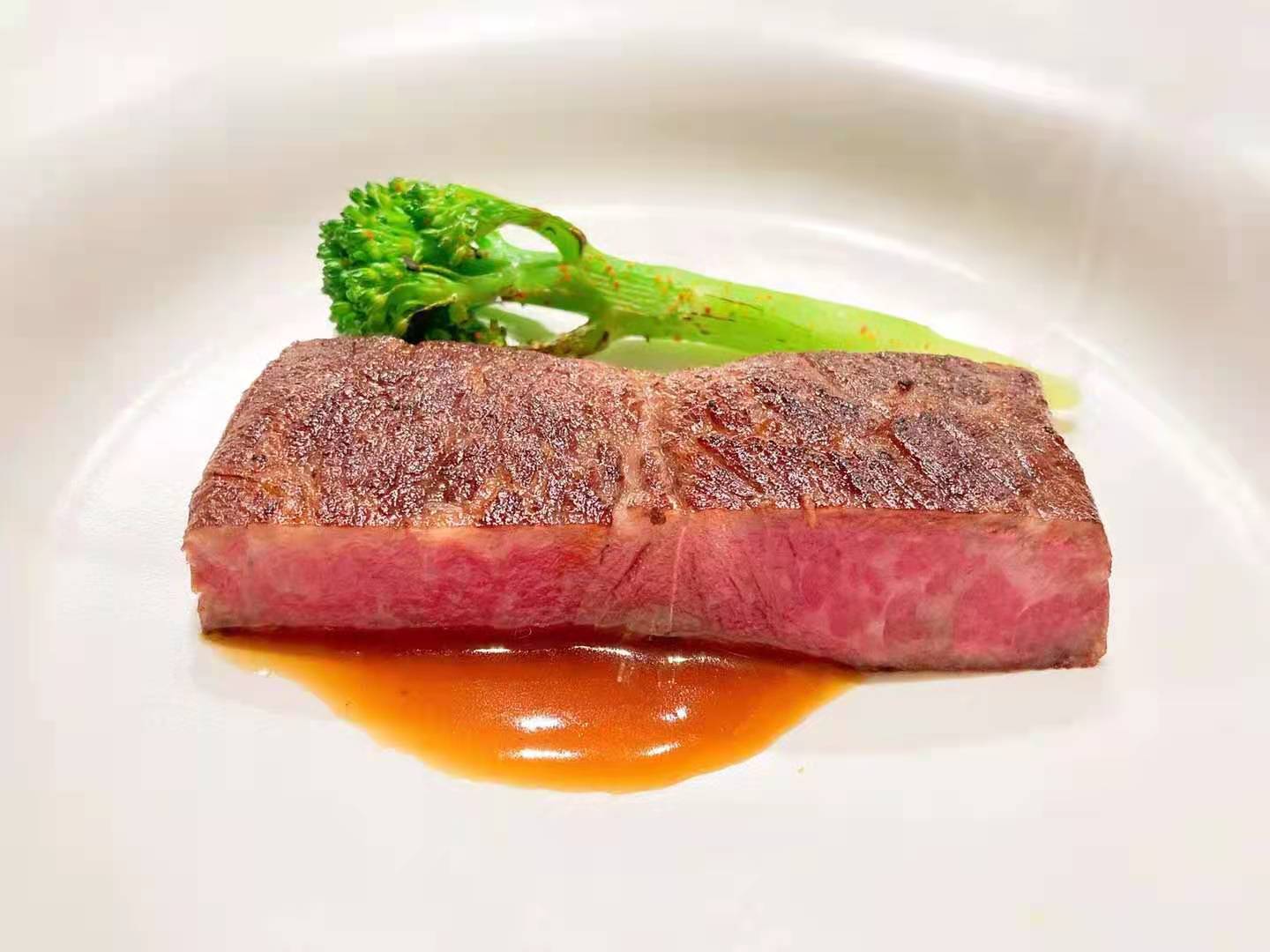
Of course, my liquid libations were also nothing to shake my swizzle stick at, with an absolutely fantastic vertical of Petrus to keep me company (my write-up on this once in a lifetime vertical is set to be coming soon here on the TerroirSense Wine Review) and smashingly good Bas Armagnac to finish things off with. The 1982 Petrus is just a magnificent wine, one the greatness of which is immediately apparent to everyone the second the first drop wanders in the vicinity of even the most inattentive taste bud. The wine was so spectacular in fact that a hush fell on the table after everyone’s first sip: it was truly amazing to see how everyone just turned serious and shut up at once to concentrate on what they had in their glass, save for the lady sitting next to me who couldn’t stop grinning from ear to ear, her eyes flashing so brightly that ships out on the Chinese high seas were getting wrecked on shoals, victims of following the wrong lighthouse beam. Just the slightest hint, and I do mean the slightest, hint of garnet at the rim and the mellow flavours of ripe red and blue fruit were just about the only concessions to the passage of almost forty years since bottling. Silky smooth with nuances of black truffle, sandalwood and cocoa nicely intertwined with elements of steel shavings, sage and roast Sumatra Mandheling coffee, the finish is practically endless and leaves you wishing and hoping for a bottomless bottle. I also want to say that I have seen some absurdly low scores awarded to this wine over the years, and I can safely say that there can be little doubt that outside of complete taster incompetence or bad faith, almost all those bottles must have been fakes: the real 1982 Petrus is quite simply one of the greatest bottles of red wine you will ever drink, and I have now been fortunate to have this wine enough time not just know to what it’s about and what to expect but to recognize it as such.
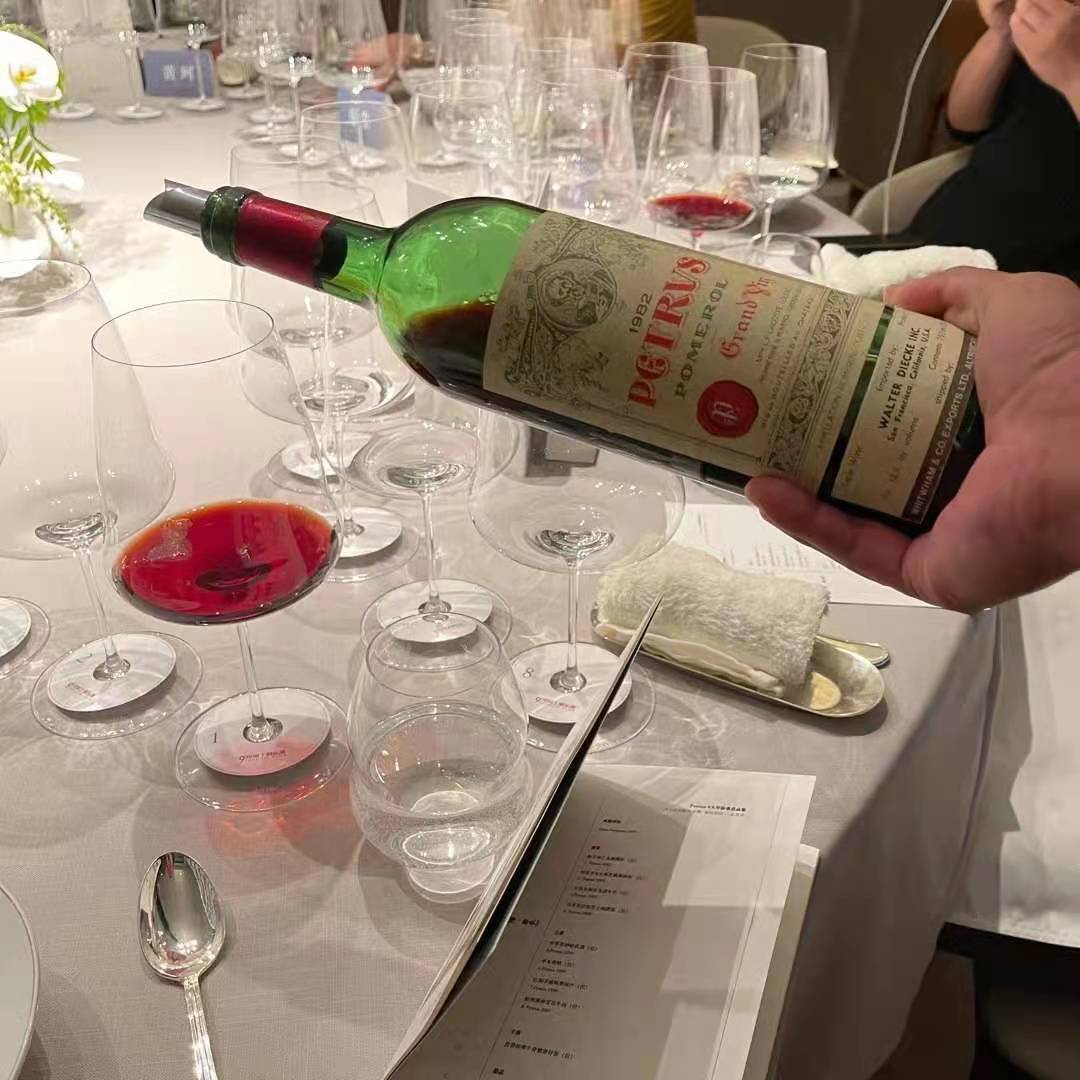
After that performance, you might think the Bas Armagnac had a tough act to follow, but in fact it acquitted itself very well. A real beauty, the Darroze Bas Armagnac 1970 Domaine de Bellair was matured for close to half a century in French oak and offers a smooth and suave like the best Armagnacs are (when more commonly they offer a slightly fleshier but often coarser tipple than an XO Cognac, for example). This 60% Baco Noir and 40% Ugni Blanc blend from the area of Cravencères (and therefore not to be confused with Darroze’s 1970 Bas Armagnac from Château de Gaube which is 100% Baco Noir) offers myriad aromas and flavours of almond paste, caramel, sweet spices, orange peel, dried flowers, white chocolate, musk, Cuban cigar ash and roasted pineapple lasted well into the morning and long after most reasonable taxi drivers were willing to wake up and take anyone home. So come the time for the sweet parting of our company’s ways, I just pulled up my jacket’s collar and started walking into the deep blue Beijing night.
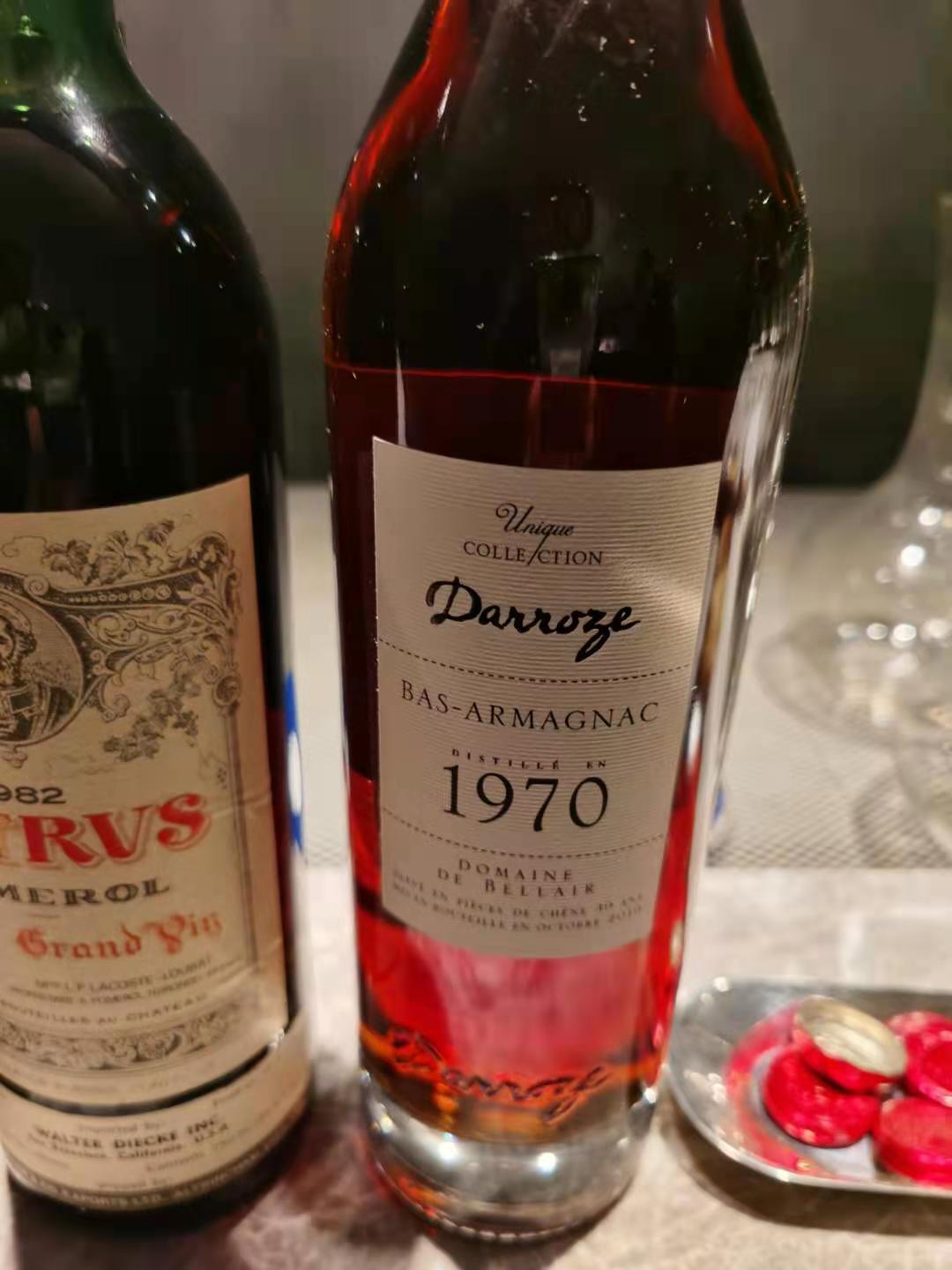
The dishes
Yongkang Indigenous foie gras with hazelnuts
Spanish 5J ham salad with arugula
Braised ox tongue with orange flavour
Baked mushrooms with mozzarella cheese
Steamed pigeon with Chinese basil
Traditional roast duck with jujube flavour
Braised mutton brisket with concentrated chestnut sauce
Australian Wagyu beef with oyster extraction
Chef Duan’s beef bone marrow clay pot rice
Yam ice cream with flower fragrance
The wines
Petrus 1982 99
Darroze Bas Armagnac 1970 Domaine de Bellair 94

 English
English
